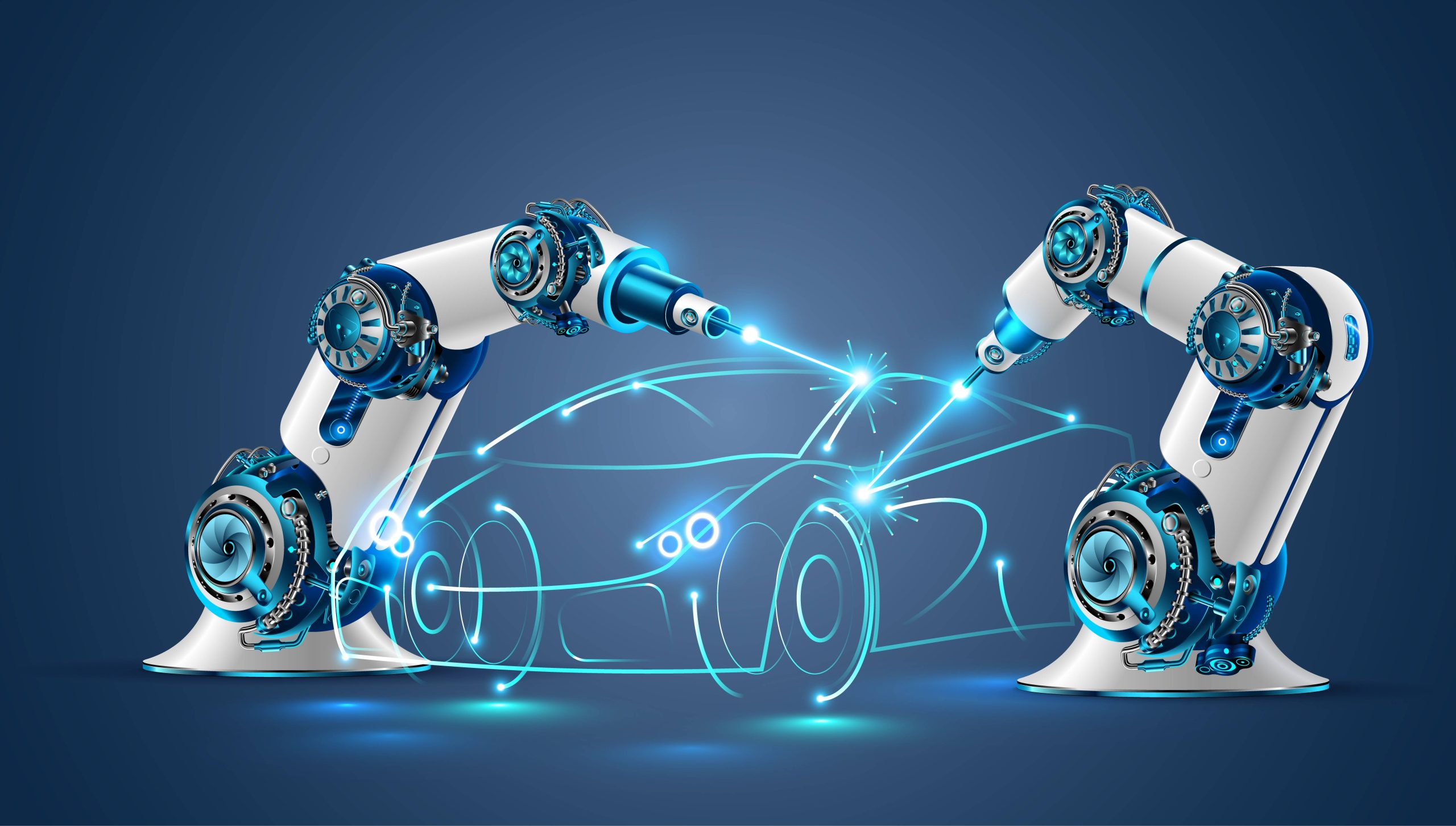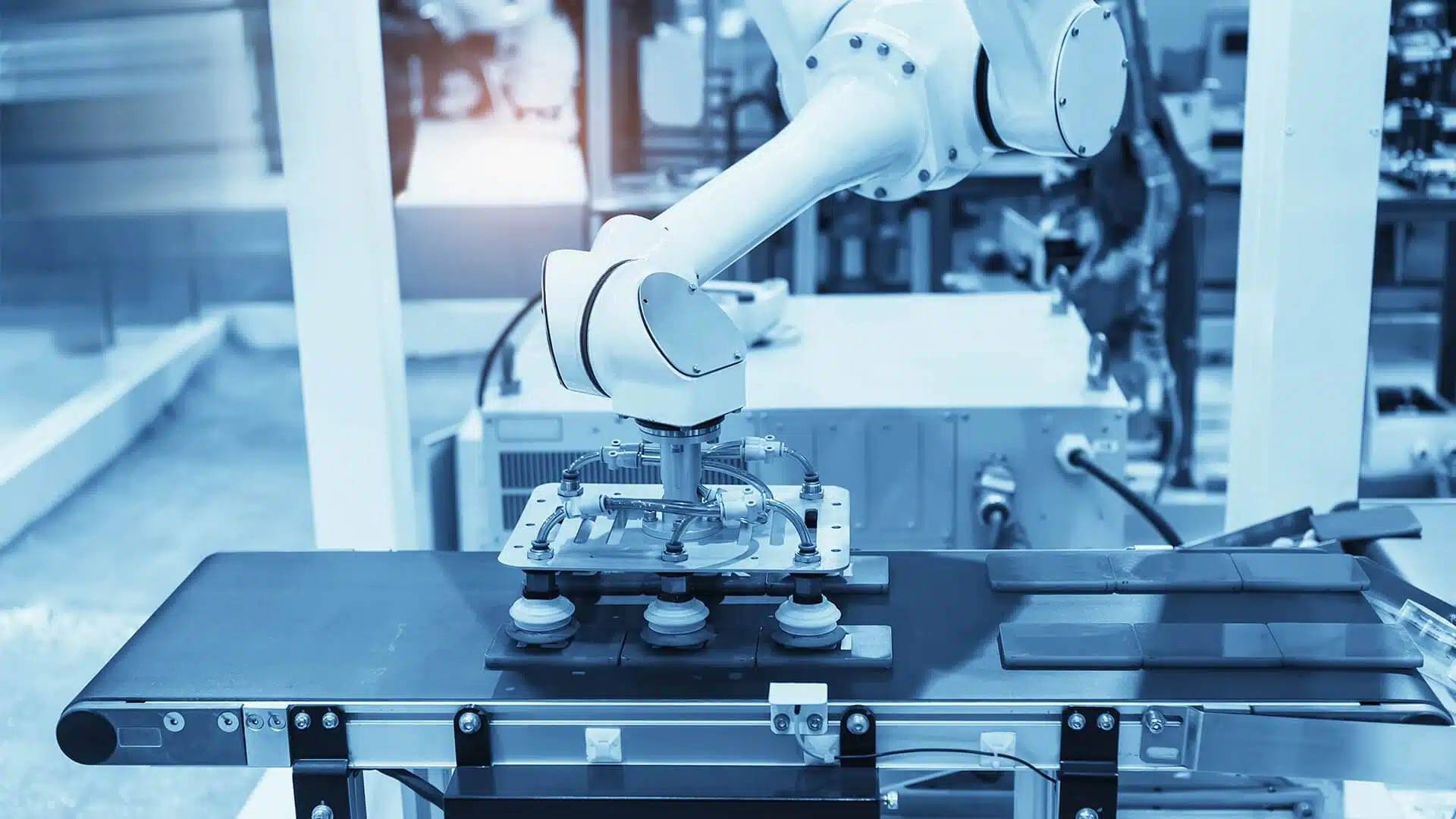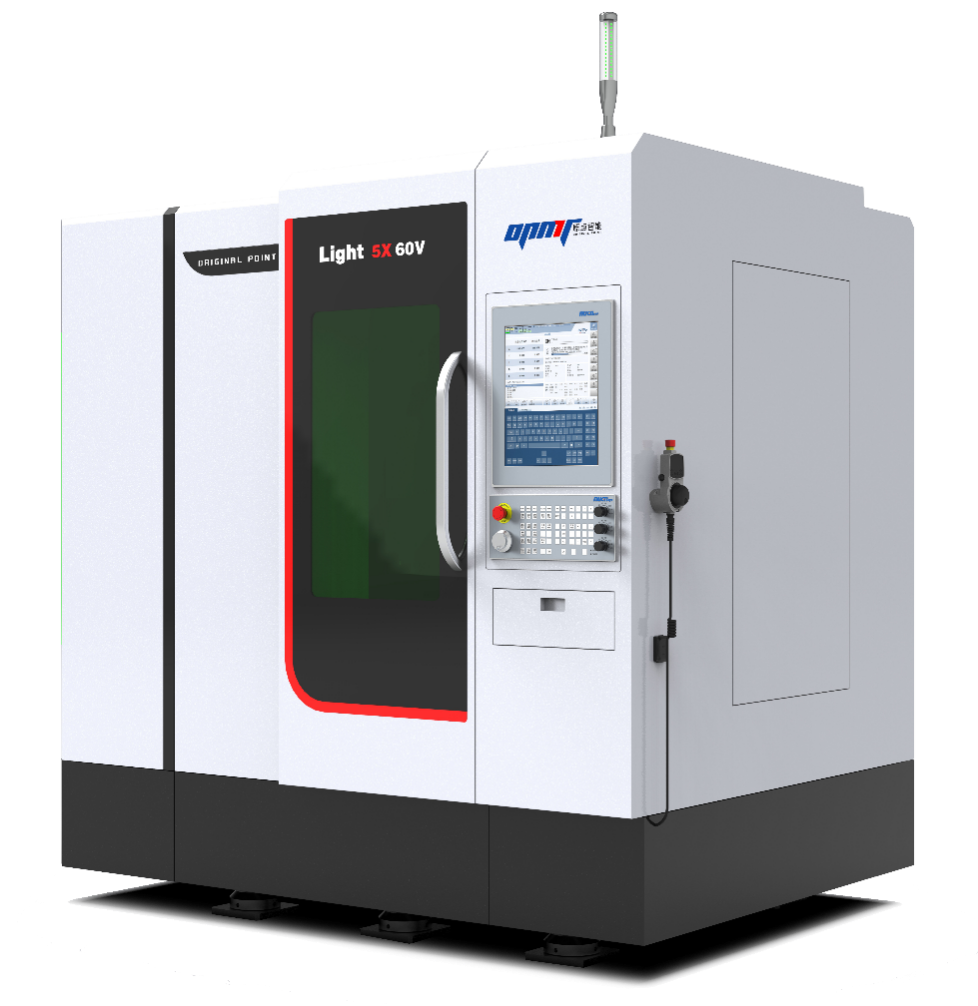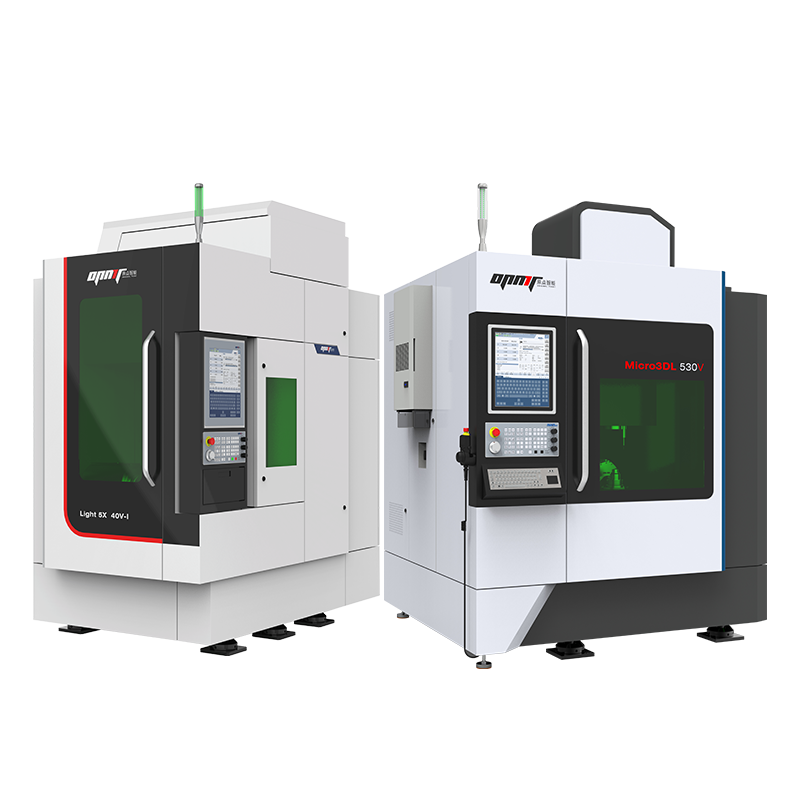In a high-tech aerospace workshop, a five-axis CNC machine sculpts nickel-alloy turbine blades with ±0.005mm precision. These components, featuring over 200 freeform surfaces, traditionally required 20 manual setups. Today, CNC systems complete them in 72 hours—a testament to how these “industrial mother machines” drive modern manufacturing.
China’s CNC machine market surpassed ¥260 billion ($36 billion) in 2024, yet domestic manufacturers hold less than 10% of the high-end segment. Bridging this gap is OPMT Laser, a pioneer in multi-axis CNC and laser processing solutions. With 250+ patents and collaborations with Tsinghua University, OPMT’s Micro3D-L530V Five-Axis Laser Center slashes titanium part costs by 40% while achieving 99.7% yield in semiconductor wafer cutting.
This article explores CNC machine classifications, industry-specific applications, and innovations reshaping precision manufacturing.
CNC Machine Classifications: Technical Standards and Innovations
1. By Process Functionality: From Specialization to Hybridization

CNC machines are categorized by their primary operations, but modern systems increasingly combine multiple processes.
Key Types:
- Lathes: Ideal for cylindrical parts like bearings (roundness ±2μm).
- Milling Machines: OPMT’s 563V Vertical 5-Axis System processes aluminum EV battery trays at 12m/min with Ra 0.4μm finishes.
- Hybrid Laser Systems: The WJC532V Water-Guided Laser Center cuts silicon carbide without thermal damage, boosting semiconductor productivity by 30%.
Trend: Automotive suppliers now use turn-mill centers to reduce setups by 70%, cutting camshaft production cycles from 8 hours to 2.5 hours.
By Motion Control: Balancing Precision and Cost
Motion control defines a machine’s capability and price tier:
| Control Type | Accuracy | Applications |
|---|---|---|
| Point-to-Point | ±0.1mm | Drilling, stamping |
| Contouring | ±0.005mm | Aerospace blades, 5G molds |
OPMT’s SmartDrive Servo System uses real-time feedback to achieve ±0.001mm positioning, outperforming traditional ball-screw systems by 50% in accuracy.
By Servo Mechanism: The Core of Performance
Servo systems determine speed, precision, and energy efficiency:
- Open-Loop: Low-cost but limited to ±0.1mm (basic drilling).
- Closed-Loop: Achieves ±0.001mm via encoder feedback but relies on imported components.
Breakthrough: OPMT’s LightGrind-LT20 Laser Grinder replaces diamond abrasives, reducing coolant use by 90% while grinding tungsten carbide tools to Ra 0.05μm.
Cutting-Edge Technologies Redefining CNC
1. AI-Driven Adaptive Machining
Machine learning optimizes parameters in real time:
- Adjusts laser power (100W–10kW) and feed rates (0.1–20m/min) based on material sensors.
- Reduces energy consumption by 20% during titanium aerospace part production.
Case Study: A medical supplier cut implant costs by 18% using OPMT’s AI-optimized toolpaths.
2. Sustainable Laser Processing
Green technologies minimize waste and energy use:
- Closed-Loop Coolant: Recycles 90% of fluids in OPMT’s DIACUT-L315V System, complying with EU REACH standards.
- Ultrafast Lasers: Process carbon fiber at 500 holes/sec with <3% material waste, critical for EV battery trays.
Impact: Adoption in automotive plants has lowered CO2 emissions by 30% per part.
3. Modular CNC Ecosystems
IoT-enabled systems enable flexibility and predictive maintenance:
- Plug-and-Play Tooling: Switch between carbon fiber and ceramics in 15 minutes.
- Remote Diagnostics: Vibration sensors cut unplanned downtime by 40% in aerospace factories.
OPMT’s Light-5X-60V Platform supports 10+ material types, from lab-grown diamonds to Inconel 718.
Industry-Specific Applications of CNC Technology
1. Aerospace: Mastering Extreme Precision
CNC machines produce mission-critical components like titanium turbine blades and CFRP wing ribs for next-gen aircraft.
Key Challenges:
- Heat Management: OPMT’s Micro3D-L570V Five-Axis System uses water-guided lasers to cut Inconel 718 with zero thermal distortion, achieving Ra 0.2μm surface finishes.
- Complex Geometries: 5-axis contouring machines 200+ freeform surfaces in a single setup, reducing lead times by 65%.
Case Study:
A leading jet engine manufacturer reduced blade scrap rates from 8% to 0.9% using OPMT’s adaptive thermal compensation, saving $4.2M annually.
2. Automotive: Electrification and Mass Customization

EV production demands CNC systems for aluminum battery housings, carbon fiber chassis, and high-precision motor components.
Innovations:
- Ultrafast Laser Cutting: OPMT’s LP550V Laser Cutter processes 3mm-thick steel at 20m/min with ±0.03mm accuracy, meeting Tesla’s 45-second cycle targets.
- Modular Fixturing: Rapid tooling swaps enable production of 15+ EV models on a single line.
Data Impact:
| Metric | Traditional CNC | OPMT Laser CNC |
|---|---|---|
| Cycle Time | 8 hours | 2.5 hours |
| Material Waste | 12% | 2.5% |
3. Medical Devices: Life-Saving Precision

CNC machines craft titanium spinal implants and surgical tools with biocompatible surfaces.
Critical Requirements:
- Zero Defects: OPMT’s LightGrind-LT10 grinds cobalt-chrome alloys to Ra 0.1μm, eliminating post-processing.
- Micro-Scale Features: Laser micro-drilling creates 50μm fluid channels in drug delivery devices.
Breakthrough:
A Swiss medtech firm reduced implant rejection rates by 22% using OPMT’s non-contact laser polishing.
Future Trends Shaping CNC Manufacturing
1. AI-Powered Smart Factories
Machine learning algorithms now predict tool wear with 95% accuracy, optimizing maintenance schedules.
OPMT’s Edge:
- Light-5X-40V System: Self-adjusts feed rates during ceramic machining, cutting energy use by 25%.
- Digital Twins: Virtual replicas of CNC systems reduce commissioning time by 70%.
2. Green Manufacturing Initiatives
Sustainability drives innovation in CNC technology:
- Dry Machining: OPMT’s DIACUT-L315V eliminates coolant in titanium processing, slashing fluid costs by 100%.
- Energy Recovery: Regenerative drives recycle braking energy, reducing power consumption by 18%.
Regulatory Push:
EU’s Carbon Border Tax incentivizes adoption of eco-friendly CNC systems like OPMT’s ISO 14955-compliant machines.
3. Democratization of High-End CNC
OPMT’s L100V Benchtop CNC brings 5-axis capabilities to SMEs at 1/3 the cost of industrial systems.
Key Features:
- Plug-and-Play Operation: Setup time reduced from 8 hours to 45 minutes.
- Cloud-Based Toolpaths: Access 10,000+ pre-optimized G-code templates for rapid prototyping.
Conclusion: The Path to Technological Sovereignty
While China’s CNC industry still imports 85% of high-end controllers, firms like OPMT Laser prove domestic innovation can disrupt global markets. With ¥34M in provincial R&D grants and partnerships with Tsinghua University, OPMT’s 5-axis laser systems now rival German and Japanese counterparts at 60% lower cost.
Three Strategic Priorities:
- Core Component Localization: Boost domestic production of ball screws and linear guides.
- AI-Process Integration: Develop machine learning models trained on Chinese manufacturing data.
- Global Standards Leadership: Lead ISO working groups on laser-assisted machining.
The next decade will see CNC technology converge with quantum computing and advanced materials science—a revolution where precision meets possibility.
Disclaimer
This content is compiled by OPMT Laser based on publicly available information for reference only; mentions of third-party brands and products are for objective comparison and do not imply any commercial association or endorsement.




